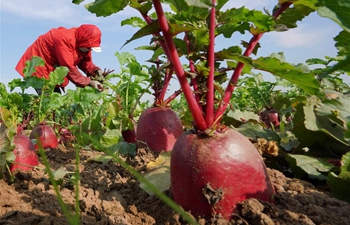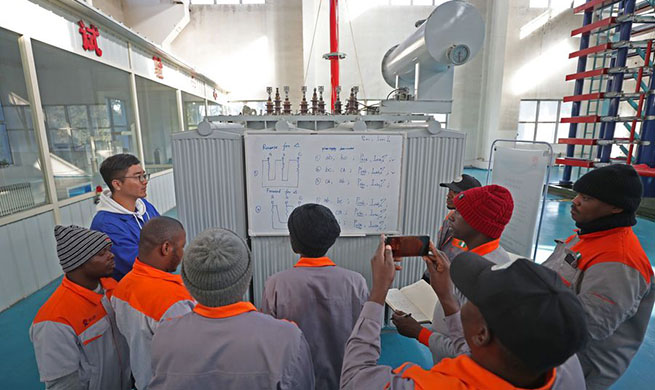WASHINGTON, Oct. 29 (Xinhua) -- Energy and metal commodity prices are expected to continue to fall next year following sharp declines this year on a weaker outlook for global growth and consequent softer demand, the World Bank said in its October Commodity Markets Outlook released Tuesday.
Crude oil prices are projected to average 60 U.S. dollars per barrel this year and weaken to 58 dollars per barrel next year, said the outlook.
In line with the slowdown in global growth, oil consumption is now expected to rise at a much slower pace than in earlier forecasts, the new report showed, noting that a "sharper-than expected economic downturn" poses the greatest risk to the oil price forecast.
More broadly, energy prices, which also include natural gas and coal, are expected to average almost 15 percent lower in 2019 than in 2018, and to continue to decline in 2020, the report said.
Prices of metal, including iron ore, copper and zinc, are also projected to fall 5 percent this year and continue to slide next year as slowing global demand weighs heavily on the market, according to the October outlook.
Precious metals, which have risen sharply this year, are anticipated to make further gains in 2020 in response to heightened global uncertainty and accommodative monetary policies, the outlook showed, adding that prices of agricultural commodities are anticipated to decline this year but stabilize in 2020.
"Depending on export revenues from a small set of commodities makes commodity-exporting developing economies vulnerable because demand surges and higher prices could induce innovation and facilitate substitution among commodities," said Ayhan Kose, director of the World Bank Group's Prospects Group.
A resolution of trade tensions could push up the prices of some agricultural commodities, such as soybeans and corn, while lower energy prices could lower fuel costs and fertilizer prices, reducing prices of energy-intensive crops such as oilseeds, the report said.













